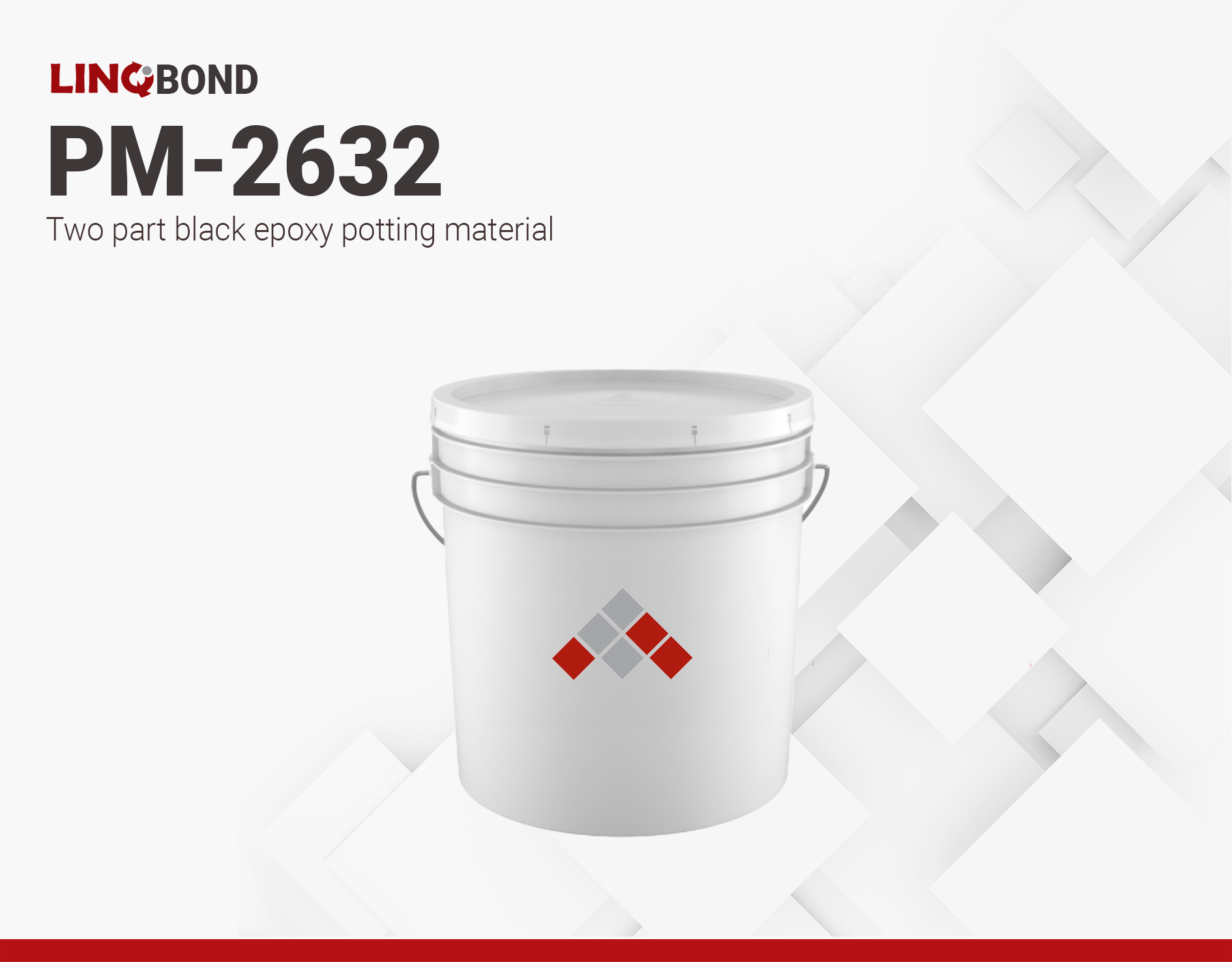LINQBOND PM-2632 | Two part epoxy resin potting material
- Low viscosity
- Low-temperature curing
- Ideal potting material for capacitors and epoxy resin for edge casting
Product Description
LINQBOND PM-2632 is a black, two-part flame-retardant potting epoxy resin. With its low viscosity after mixing, it offers a long service life and easy application process. PM-2632 can be cured at low temperature, and once cured, it exhibits excellent electrical, thermal dissipation, and mechanical properties.
LINQBOND PM-2632 is an ideal potting material for small electronic components, such as capacitors, and epoxy resin for edge casting applications. Its operating temperature is -20 up to 100°C.
Technical Specifications
| General Properties | |
| Pot Life Pot Life Pot life is the amount of time it takes for the viscosity of a material to double (or quadruple for lower viscosity materials) in room temperature after a material is mixed. It is closely related to work life but it is not application dependent, less precise and more of a general indication of how fast a system is going to cure. | 0.83–1.08 hours |
| Thermal Properties | |
| Glass Transition Temperature (Tg) Glass Transition Temperature (Tg) The glass transition temperature for organic adhesives is a temperature region where the polymers change from glassy and brittle to soft and rubbery. Increasing the temperature further continues the softening process as the viscosity drops too. Temperatures between the glass transition temperature and below the decomposition point of the adhesive are the best region for bonding. The glass-transition temperature Tg of a material characterizes the range of temperatures over which this glass transition occurs. | 67 °C |
| Operating Temperature | -60 - 100 °C |
| Electrical Properties | |
| Volume Resistivity Volume Resistivity Volume resistivity, also called volume resistance, bulk resistance or bulk resistivity is a thickness dependent measurement of the resistivity of a material perpendicular to the plane of the surface. | >1.0 × 10¹⁴ Ohms⋅cm |
Additional Information
Premixed Properties
Property | Part A | Part B |
Appearance | Black liquid | Light yellow transparent liquid |
Specific gravity at 25 °C | 1.55±0.05 | 1.09±0.01 |
Viscosity at 25 °C | 9700±2300 cP | 100±20 cP |
Shelf life | 183 days | 183 days |
Precautions for Use
- Storing Part A for an extended duration may cause filler precipitation. Stir thoroughly before use to achieve uniform filler distribution.
- During cold seasons, preheat Part A at 30–50 °C for best results.
- The usable time of Parts A and B after mixing is affected by temperature and mixing volume. The higher the temperature and the larger the mixing volume, the shorter the usable time. Therefore, the mixing temperature and mixing volume should be determined according to the on-site operation.
- Please wear relevant protective equipment before use, minimizing direct contact with the skin. Pay careful attention to the details and review the Material Safety Data Sheet (SDS) before initiating use.
Storage and Handling
Store in a ventilated, dry, and clean environment at room temperature. Keep away from fire and heat sources. At proper storage conditions, Part A and Part B both have a shelf life of 183 days. Shelf life can be extended by using cold storage.



